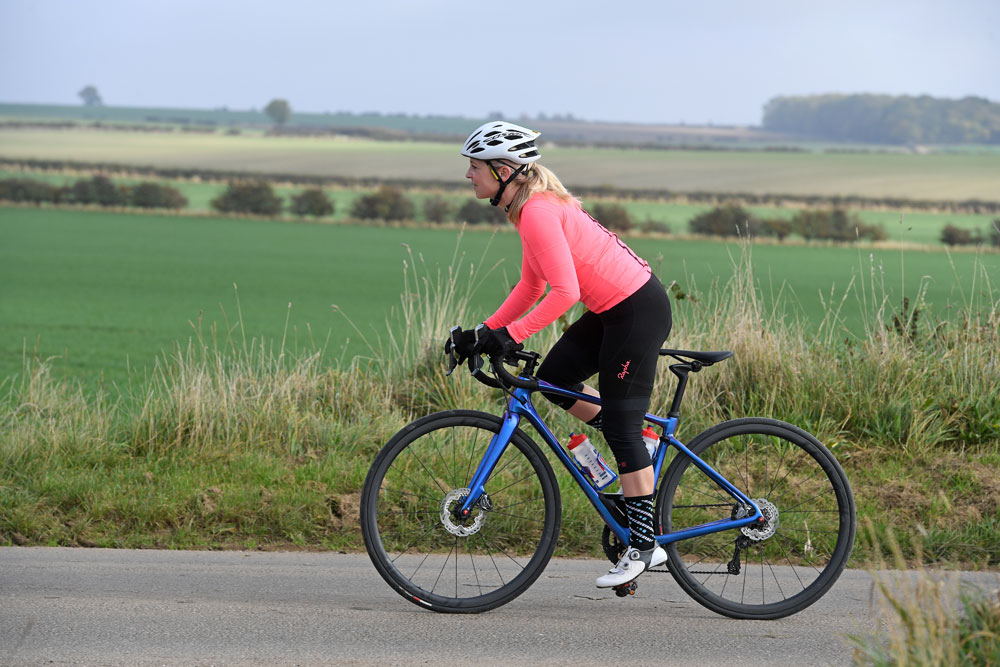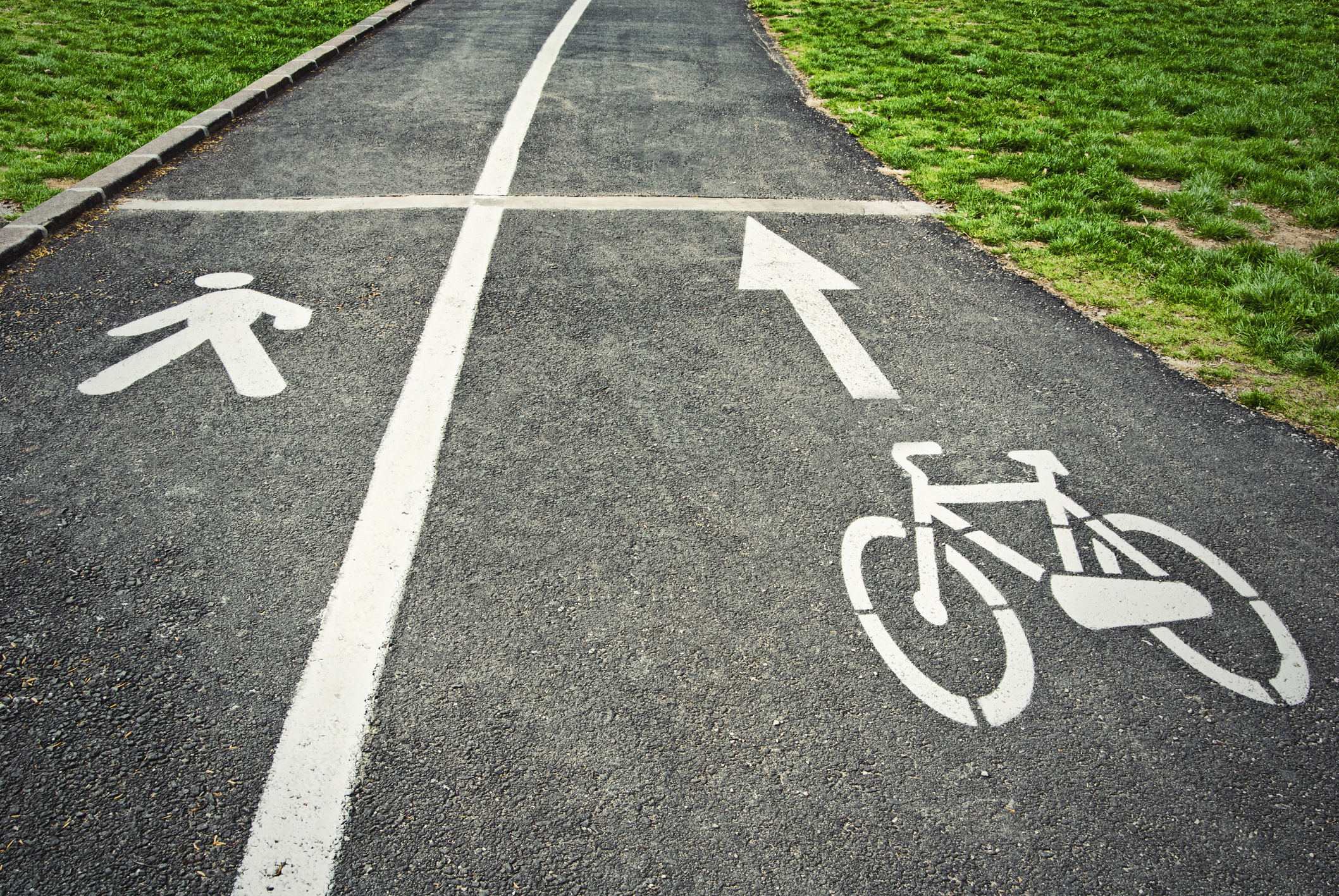The thought of navigating a roundabout can be daunting for many cyclists: Six steps to riding roundabouts with confidence
Do these circular systems send your head into a spin? Armed with knowledge and confidence, there's no need to be put off by roundabouts


For many cyclists, the thought of navigating a roundabout can be daunting, however with a bit of practice and the right strategies, roundabouts can become just another (manageable) part of your cycling journey. In this guide, we’ll explore practical tips and confident strategies to help you ride safely and fearlessly.
How do I ride roundabouts safely?
The aim of a roundabout is to keep traffic flowing smoothly and efficiently. However, for cyclists, they can make you feel vulnerable and confused. As you approach a stream of fast-moving vehicles you have many judgements and decisions to make; when to pull forward into a gap, which lane to be in, how to hold your space and the fear of faster, larger vehicles engulfing you.
If the thought of pedalling onto a roundabout sends shivers down your spine, you’re not alone. Many cyclists share this apprehension, but the good news is that by understanding the basic principles of roundabout navigation, gaining a bit of confidence, and practising some key skills, you'll find roundabouts can be navigated both safely and efficiently. Let’s get started.
Six steps to confidence on roundabouts
Approach with Awareness
The first step to tackling a roundabout is approaching it with full attentiveness. Slow your pace as you approach and take stock of the situation. Take a quick glance over your shoulder so you are aware of what is coming up behind you and where they might position themselves. Be mindful of the traffic flow, vehicle speed, and lanes specifically designated for cyclists if available.
Position Yourself Strategically
Your position on the road as you enter a roundabout is crucial. Aim to establish yourself in the centre of your lane. While it might seem nerve-wracking, taking the lane can prevent vehicles from attempting risky overtakes and gives you the space to manoeuvre as necessary. This tactic is especially important in multi-lane roundabouts. While huddling close to the edge of the road may make you initially feel more comfortable it is a vulnerable position to ride in as it makes it hard for drivers to spot you and reduces the space you have move into if other vehicles encroach on you.
Get The Leadout Newsletter
The latest race content, interviews, features, reviews and expert buying guides, direct to your inbox!
Signal Your Intentions
Clear communication is essential. As vehicles and other cyclists share the road, it's key to signal your intentions early. Use hand signals before entering and exiting the roundabout to inform other road users of your planned movements. If you find signalling difficult whilst also making a turn this is a skill to practice somewhere safe until you are confident. Make sure you signal early to cars behind before moving across a lane or taking an exit.
Stay Aware of Exits
Identify your intended exit before entering and stay aware of it as you move around the roundabout. This mental map aids in your positioning and helps ensure you safely navigate to your desired path without last-minute, erratic movements.
Be Mindful of Larger Vehicles
Larger vehicles, such as lorries and buses, may need extra room to manoeuvre. Allow them the necessary space and avoid lingering in their blind spots or positioning yourself to the sides of them. If feeling particularly unsure, it may be safer and more prudent to wait before entering.
Maintain a Steady Pace
Once you’ve entered the roundabout, maintain a consistent pace. This not only aids in your pedalling efficiency but also helps drivers predict your movement and intentions. Abrupt changes in your speed can cause confusion and potentially hazardous situations.
Tips for roundabouts with cycle paths

In some cases, you may be able to use a cycle path around the roundabout, as opposed to staying within the flow of traffic. If this is available, first, evaluate the cycle path to determine if it is the best option for you. Cycle paths can offer a safer and less stressful journey through a roundabout, especially if you're less confident or if the roundabout is particularly busy. Check for clear signage and road markings indicating the presence of a cycle path.
Transitioning to the Cycle Path
If you decide to use the cycle path, signal your intention early and transition smoothly onto the path, ensuring you give way to pedestrians or other cyclists already using it. Stay alert for any potential hazards such as kerbs, bollards, or debris that might impede your path. Cycle paths around roundabouts are designed to keep cyclists separate from motor vehicles, directing you around the outer edge. Follow the path’s route, observing any give-way markings or traffic signals that may apply specifically to cyclists.
Maintain Awareness
Even when using a cycle path, remain vigilant. Watch for crossing pedestrians, pets, and vehicles entering or exiting driveways or side roads intersecting the cycle path. Use your bell or voice to alert others of your presence if needed. When it’s time to exit the roundabout, look for signage indicating where the cycle path re-joins the main carriageway. Signal your intention and merge safely back onto the road, being cautious of vehicles and other cyclists.
Practice, Practice, Practice
Like any skill, proficiency comes with practice. Break down the skills you need and practice somewhere you feel safe. To navigate a roundabout safely you need to be able to check over your shoulder and clearly signal your intention while still holding a straight line or making a turn. Once you can do these things begin on smaller, less busy roundabouts to build confidence.
Facing roundabouts doesn’t have to be a nerve-wracking experience. Choosing the right path through a roundabout can depend on your comfort level, the traffic conditions, and the design of the roundabout itself. By adopting the strategies outlined here, you will be able to tackle any roundabout on your route in a calm and controlled way.

Thank you for reading 20 articles this month* Join now for unlimited access
Enjoy your first month for just £1 / $1 / €1
*Read 5 free articles per month without a subscription

Join now for unlimited access
Try first month for just £1 / $1 / €1
Hannah Reynolds interest in cycling began while studying for a degree in Sports Science at the University College Chichester and surrounded by elite level cyclists. She is now undertaking a PhD at Sheffield Hallam University investigating the use of e-bikes by older people.
A committed dabbler whose passion outweighed her talent Reynolds has competed across all disciplines of cycling bar BMX. In the very distant past she has been south-east road race champion, southern cyclo-cross champion and finished third in the European 24hr Solo mountain-bike champs in 2011. She was also the Fitness Editor of Cycling Weekly for 15 years.
Hannah Reynolds is author of several cycling books, France-en-Velo a guide to the ultimate 1000 mile cycle route from the Channel to Med; Britain's Best Bike Ride. LEJOG1000; A 1000 mile journey from Land's End to John o' Groats and 1001 Cycling Tips.
You must confirm your public display name before commenting
Please logout and then login again, you will then be prompted to enter your display name.